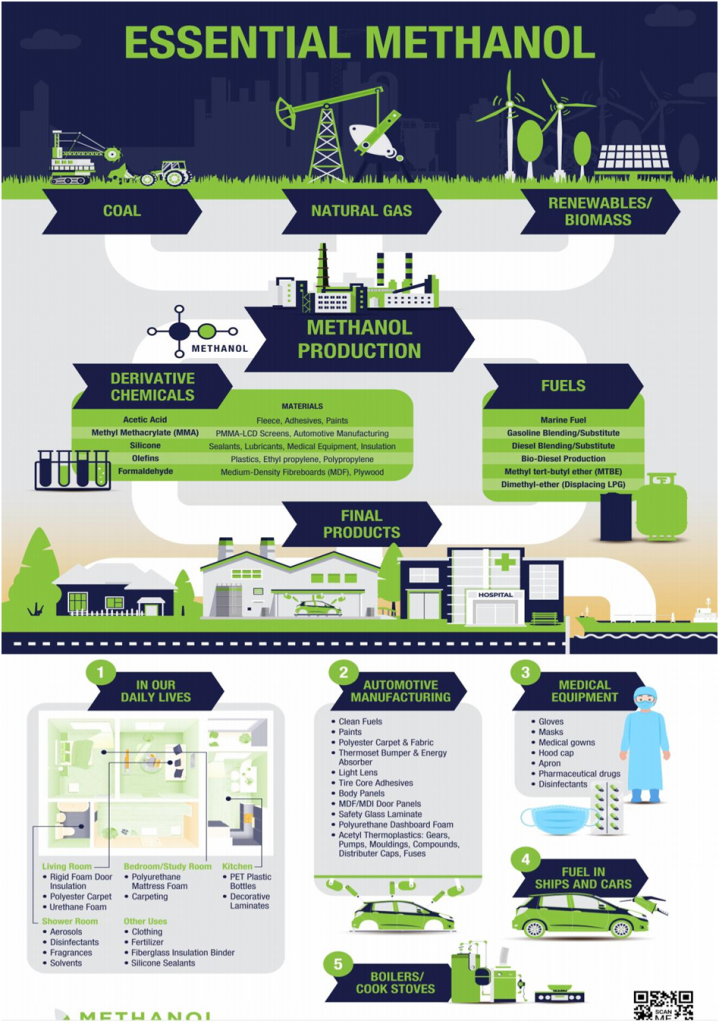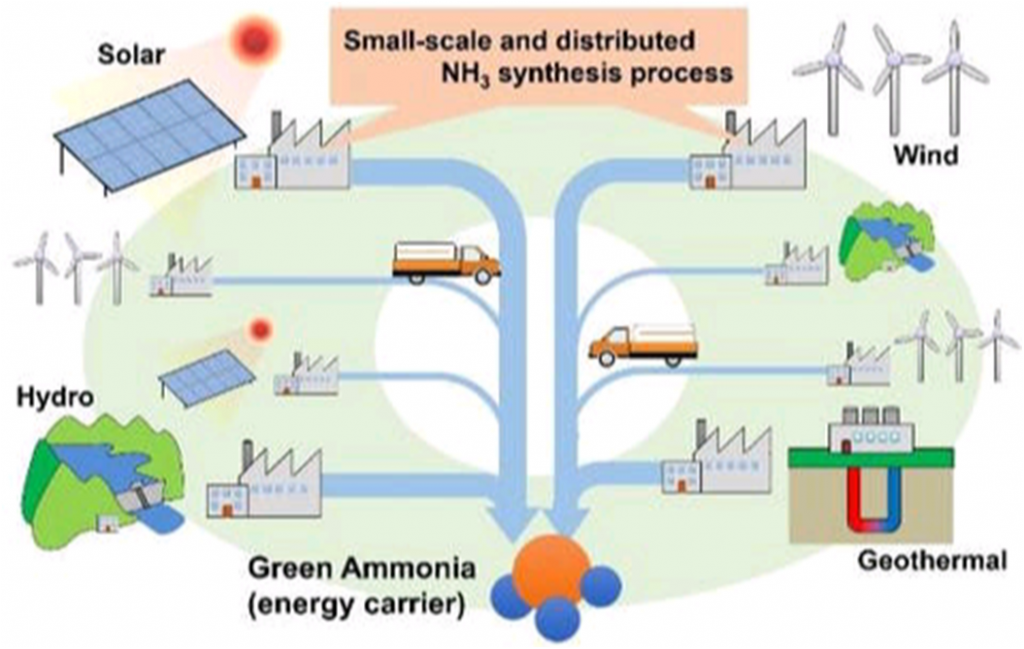Methanol:
Methanol is a clean burning fuel that is derived from diverse conventional and renewable energy sources. Also known as methyl alcohol or ‘wood alcohol,’ it is an essential building block for thousands of chemical components used every day in industrial applications and in our homes.
Methanol is a basic chemical building block for other products such as acetic acid and formaldehyde. It is used in numerous applications including plastics, paints, glues and pharmaceuticals. Methanol is also being used increasingly in new applications, such as wastewater denitrification, biodiesel, gasoline blends and fuel cells.
Formaldehyde
Formaldehyde has a long history of use and is particularly used in the production of plastics. (These are the urea-formaldehyde resins and the phenol-formaldehyde resins.)
What it’s used for: Formaldehyde is widely produced around the world for use as a disinfectant and preservative. It is also used in textile finishing and in the production of resins that act as adhesives and binders for wood products (plywood and chipboard), pulp, paper, glass-wool and rock-wool, as well as some plastics, coatings, paints and varnishes, and industrial chemicals.
Where it’s found: Pressed wood products such as particle board, plywood, paneling and fiberboard, glues and adhesives, durable press fabrics like drapes, furniture, cabinets and building materials made from particleboard, medium density fiber-board and certain molded plastics.
Products containing formaldehyde also “off-gas” which means the formaldehyde will evaporate into the air slowly at a low rate. Products that pose this risk including some latex paints, wallpapers, cardboard and paper products, dishwashing liquids, fabric softeners, shoe-care agents, carpet cleaners, lacquers and some cosmetics, such as nail polish and nail hardener.
Ethanol
Much ethanol not intended for drinking is now made synthetically, either from acetaldehyde made from acetylene, or from ethylene made from petroleum. Ethanol can be oxidized to form first acetaldehyde and then acetic acid. It can be dehydrated to form ether. Butadiene, used in making synthetic rubber, may be made from ethanol, as can chloroform and many other organic chemicals. Ethanol is used as an automotive fuel by itself and can be mixed with gasoline to form gasohol. Ethanol is miscible (mixable) in all proportions with water and with most organic solvents. It is useful as a solvent for many substances and in making perfumes, paints, lacquer, and explosives. Alcoholic solutions of nonvolatile substances are called tinctures; if the solute is volatile, the solution is called a spirit.

GREEN AMMONIA FERTILIZER
Ammonia is a pungent, colorless, gaseous alkaline compound of nitrogen main process is still the Haber-Bosch synthesis invented in 1915, operating catalyst. Anhydrous ammonia is manly used for the manufacture of nitrogenous fertilizers. It is also a building block for the synthesis of many condensed to a liquid by cold and pressure. It is manufactured by the direct combination of hydrogen and nitrogen under pressure over a catalyst. The and hydrogen (NH3) that is very soluble in water and can easily be at 15–25 MPa and between 300 and 550 °C in four reaction chambers with pharmaceuticals, for exposives, and is used in many commercial cleaning products.
Urea CO(NH2)2 is synthesized from ammona and carbon dioxde. It is used in fertlizers as a convenient source of nitrogen. Urea is also an named for its presence in human and most land anima urine (except fish and birds). Dissoved in water, t is neither acidic nor alkaline. Urea is widely important raw material for the chemical industry in anima feed, plastics and resins.
Green Ammonia

